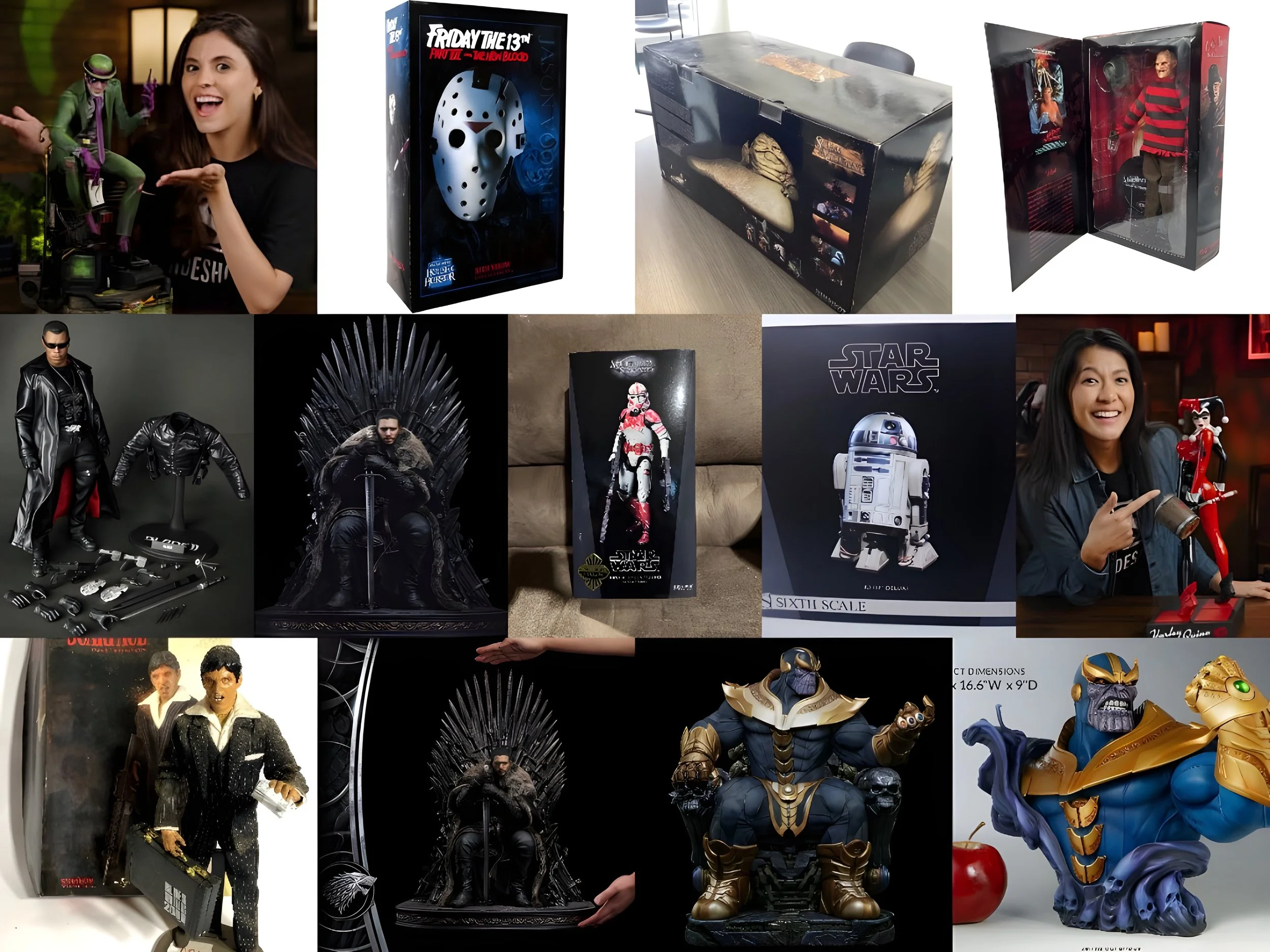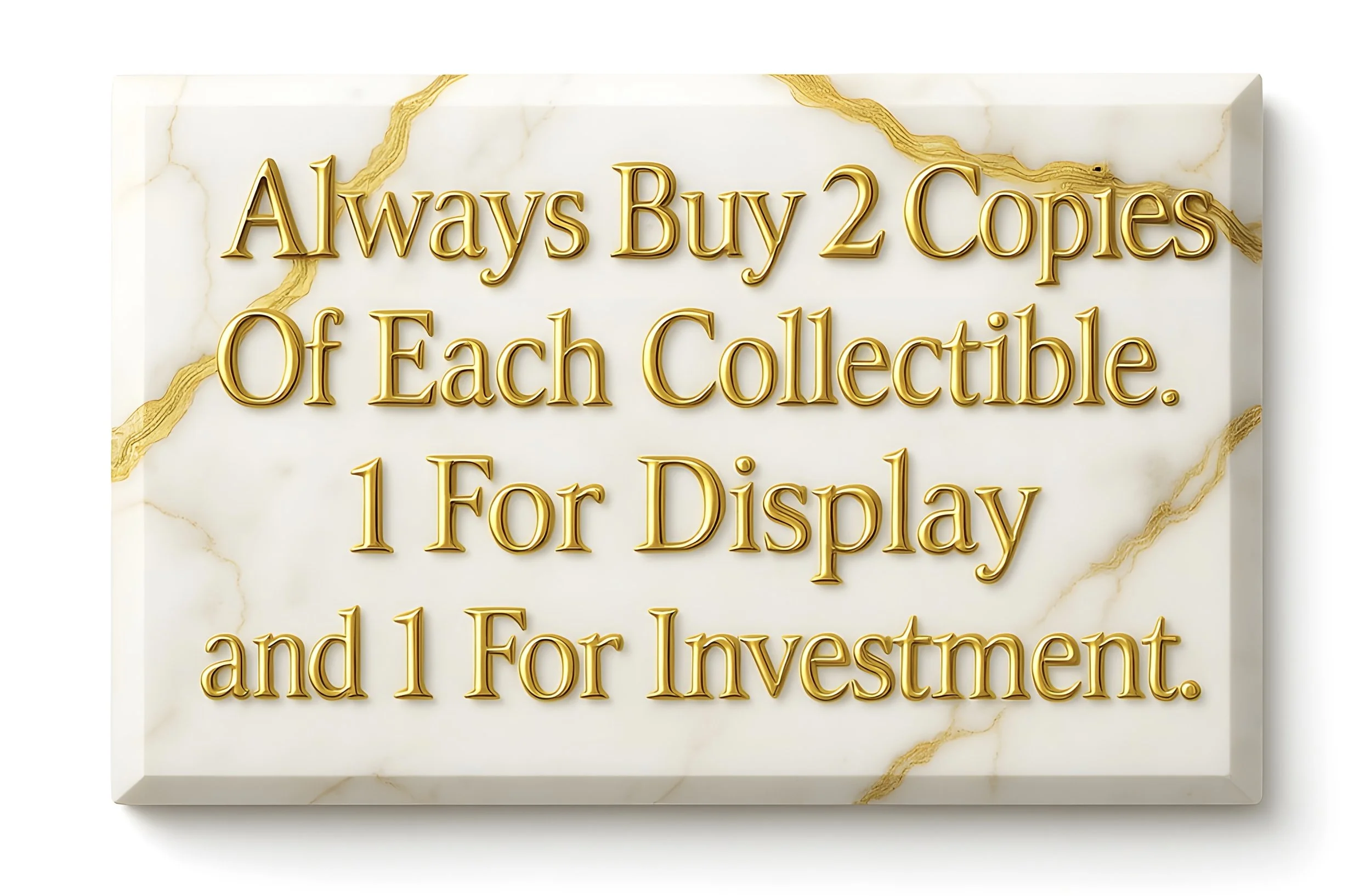The Dual-Path Paradigm: A Strategic Guide to Acquiring Two Copies of Every Collectible
Executive Summary: In the nuanced world of collecting, from vintage action figures and rare comics to limited-edition art pieces, the pursuit of a single pristine item has long been the standard. This article proposes a strategic evolution: the Two-Copy Protocol. By systematically acquiring two copies of each collectible, the modern collector can simultaneously achieve the seemingly contradictory goals of immersive enjoyment and maximum asset preservation. This guide details the methodology, best practices, and long-term benefits of this disciplined approach.
—
1. The Core Philosophy: Why Two?
The "Two-Copy Protocol" is built on a simple but powerful premise: one item is for experience, the other is for investment. This bifurcated strategy resolves the fundamental tension every collector faces—the desire to physically interact with and display a prized item versus the need to maintain its condition for future value.
[Image: A conceptual diagram showing one collectible being opened and displayed, while an identical copy remains sealed in a vault. Arrows label the paths "The Experience Copy" and "The Legacy Copy."]
Diagram 1: The Dual-Path Strategy
The Rationale:
· Risk Mitigation: Handling any item, no matter how careful, introduces risk. The "Experience Copy" absorbs this risk, allowing for detailed documentation and display without compromising the pristine state of the "Legacy Copy."
· Value Preservation: A sealed, unopened item almost universally commands a higher market value than its opened counterpart. The Legacy Copy acts as a perfect, time-capsuled asset.
· Comprehensive Documentation: With two copies, you can create an unparalleled archival record—photographing the item in and out of its packaging, which is invaluable for provenance and authentication.
· Psychological Freedom: Knowing you have a perfectly preserved copy liberates you to fully enjoy the other. You can appreciate the tactile feel, the mechanics, the scent, and the full aesthetic without the anxiety of devaluing your investment.
---
2. The Two-Copy Protocol: A Step-by-Step Guide
Copy #1: The "Experience Copy"
This is the item you engage with directly. The process is one of meticulous curation.
Step 1: Pre-Opening Documentation
Before any packaging is breached, document the item in its factory-sealed state.
· Photography: Use a high-resolution camera with a macro lens. Capture the item from all angles, focusing on serial numbers, holograms, and specific seal details (e.g., "hot glue" patterns on vintage toy cards).
· Video Log: Create a short, continuous video panning around the sealed package, stating the date and item details. This serves as a certificate of pre-condition.
[Image: A high-resolution photo of a sealed action figure on its original card, with callouts highlighting the specific details of the seal, the cardback condition, and the price sticker.]
Photo: Example of detailed pre-opening documentation.
Step 2: The Archival-Grade Unboxing
This is not a frantic rip-and-tear. It is a surgical procedure.
· Environment: Work in a clean, well-lit, and static-free environment.
· Tools: Use archival-grade tools. This includes:
· Nitrile or Cotton Gloves: To prevent oils from your skin from transferring to the item.
· Precision Knife/Scalpel: For making clean, controlled cuts.
· Blunt Spatula or Letter Opener: For gently prying open boxes without tearing.
· Soft, Clean Mat: To place the item on during the process.
Step 3: Post-Opening Documentation & Display
· Photograph Again: Now, capture the item free from its packaging. Take 360-degree views, close-ups of any accessories, and images of any internal literature.
· Archival Storage/Display:
· For Display: Place the item in a sealed, UV-protected acrylic display case to protect it from dust and light damage.
· For Storage: Use acid-free tissue paper and archival-grade boxes for any components not on display.
[Image: A photo of gloved hands using a precision knife to carefully open a collectible box on a clean white mat.]
Photo: The careful, tool-based unboxing process.
---
Copy #2: The "Legacy Copy"
This copy is the cornerstone of your collection's long-term financial and historical value. Its handling is defined by minimalism and protection.
Step 1: Initial Authentication & Recording
· Perform the same detailed photographic and video documentation as with the Experience Copy without breaking the seal.
· Verify authenticity codes or holograms through official channels if available.
Step 2: Protective Encapsulation
· Immediately place the sealed item into a protective holder. For trading cards, this means a professional grading service (e.g., PSA, CGC). For larger items, use a sealed acrylic protector or a comic book mylar bag with a full-back board.
· This secondary shell acts as a first line of defense against environmental factors.
Step 3: Vault Storage
· The Legacy Copy is not for display. It should be stored in a dedicated, climate-controlled environment—your "Vault."
· Ideal Vault Conditions:
· Temperature: Stable, between 65-70°F (18-21°C).
· Humidity: Consistent, between 40-50% RH. (Use a hygrometer to monitor).
· Light: Total darkness. UV light is a primary driver of fading and degradation.
· Storage Medium: Use archival-quality storage boxes that are acid-free and lignin-free.
[Image: A diagram of an ideal collector's vault, showing sealed Legacy Copies stored in labeled, acid-free boxes on metal shelving, with icons for temperature and humidity control, and "No UV Light."]
Diagram 2: Specifications for an Ideal Collectors' Vault
---
3. The Long-Term Payoff: Data-Driven Benefits
Adopting the Two-Copy Protocol is an upfront investment that yields significant returns.
[Chart: A dual-axis chart. Line A shows the steady, high value of a "Sealed/Graded (Legacy Copy)" over 10 years. Line B shows the lower and more volatile value of an "Opened/Displayed (Experience Copy)" over the same period. The gap between the two lines widens over time.]
Chart: Hypothetical Value Appreciation Comparison (Sealed vs. Opened Collectible)
· Enhanced Provenance: Your detailed documentation for both copies creates an ironclad chain of custody and condition report, making the items more desirable to future buyers or institutions.
· Liquidity & Insurance: The Legacy Copy is a pure, easily valued asset. It simplifies insurance appraisals and can be sold quickly without dismantling your displayed collection.
· The "Regret Buffer": If a component of the Experience Copy is damaged, fades, or is lost, the perfect, sealed Legacy Copy remains, effectively insuring you against collector's remorse.
4. Conclusion: The Disciplined Collector's Advantage
The "Two-Copy Protocol" is more than a purchasing habit; it is a mindset shift that elevates collecting from a hobby to a form of curatorship. It acknowledges the dual nature of a collection—as a source of personal joy and a portfolio of tangible assets. By embracing this disciplined approach, you are not just owning objects; you are preserving history for future generations while granting yourself the freedom to fully experience the passion that drives you. In the world of serious collecting, one is a possession, but two is a strategy.
---
Appendix: Essential Tools & Supplies Checklist
· Nitrile/Cotton Gloves
· Precision Knife & Blunt Spatula
· High-Resolution Camera with Macro Lens
· Acid-Free Tissue Paper & Storage Boxes
· UV-Protected Acrylic Display Cases
· Archival Comic Bags & Boards / Grading Service Slabs
· Climate-Controlled Storage Space (Vault)
· Digital Hygrometer & Thermometer
· Dedicated Digital Log (Database or Spreadsheet) for Documentation
The Two-Copy Collectible Strategy: A Guide for Serious Collectors
Collecting is more than ownership—it is preservation, documentation, and legacy. The Two-Copy Collectible Strategy ensures collectors can both showcase and safeguard their investments for generations to come. This booklet outlines the best practices for acquiring, documenting, storing, and displaying collectibles by always purchasing two copies of every item.
Step 1: Acquisition
Purchase at least two identical copies of the collectible. The first copy is designated for display and study; the second copy remains unopened and stored in pristine condition.
Step 2: Documentation & Photography
Photograph the collectible using professional lighting techniques. Record details such as serial numbers, edition information, and provenance. This establishes authenticity and supports insurance claims.
Step 3: Handling & Display
Using gloves and precision tools, carefully remove the first copy from its packaging and transfer it into a sealed display case. This copy becomes the centerpiece of your collection while remaining protected.
Step 4: Vault Storage
The second copy must remain sealed and untouched. Store it in a climate-controlled vault with insurance coverage. This ensures future value appreciation and guarantees a backup in case the first copy is damaged.
Final Thoughts
The Two-Copy Collectible Strategy provides balance: one copy is enjoyed, studied, and admired, while the other remains a preserved investment. Collectors who adopt this method secure both the experiential and financial dimensions of collecting.



